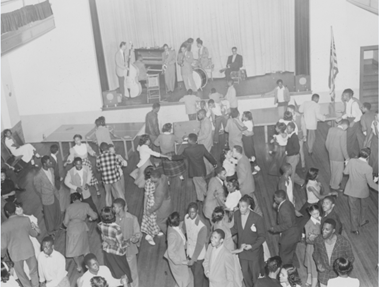Last updated: May 17, 2024
Article
The Day After Brown

This day was a long time coming as the case was first filed in U.S. District Court, District of Kansas in Topeka on February 28, 1951. On June 25th of that year, Topeka attorneys Charles Bledsoe and Charles and John Scott along with Robert Carter and Jack Greenberg of the NAACP’s legal staff rose in district court to demand the total and immediate desegregation of Topeka’s elementary schools.
In August, the three-judge panel unanimously found in Brown v. Board of Education of Topeka that “…no willful, intentional or substantial discrimination…” existed in public schools in the city, even though the Topeka school board operated four elementary schools for African American school children as permitted by state law. In dismissing the complaint, they cleared the way for Brown v. Board of Education of Topeka to be appealed to the Supreme Court.
In June 1952, the Supreme Court announced that it would hear oral arguments in Brown during the October 1952 term. From December 9 to 11, 1952, the court heard the first round of arguments in Brown and the companion cases followed with an order to hear a second round of arguments during the October 1953 term. From December 7 to 9, 1953, the court heard the second round of arguments and finally rendered a ruling on May 17, 1954.
While a future Supreme Court decision would culminate with Brown II on May 31, 1955, which ordered that the desegregation of public educational facilities must occur with “all deliberate speed,” May 17, 1954, was a cause for celebration in Topeka. As reported in the Topeka State Journal newspaper, a “victory celebration” was planned for Tuesday, May 18, 1954, at Monroe Elementary School. Organized by Topeka NAACP president McKinley Burnett, the 8:15 p.m. event was held in the school’s auditorium.
Dr. A.M. Lampkin, pastor of Shiloh Baptist Church and Rev. E. Woody Hall, pastor at St. John’s AME church spoke at the gathering as did Dr. G. Robert Cotton, president of Topeka’s Kansas Technical Institute - a vocational school for the city’s African American students founded in 1895.
Music for the event was provided by the choir and men’s chorus of Antioch Baptist Church. Lucinda Todd, one of the 13 plaintiffs in the original Brown v. Board of Education of Topeka lawsuit and facilitator of the NAACP involvement in the local case said, “I’m wonderfully happy about the decision…We may have a long time to go before segregation is actually abolished, but we are just thankful we have come this far. The very fact that segregation was ruled illegal means a great deal, regardless of the machinery that must now be set up.”
